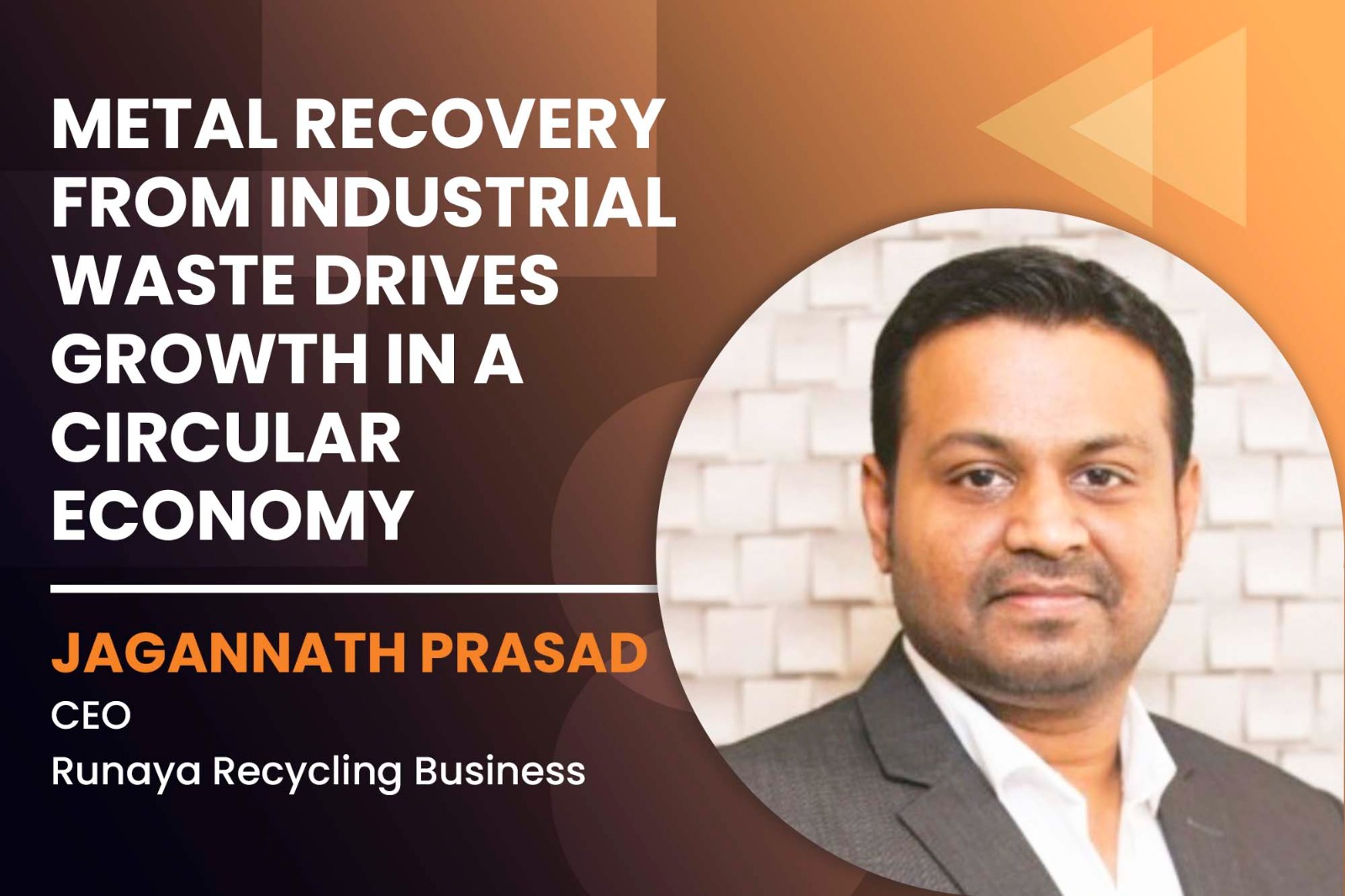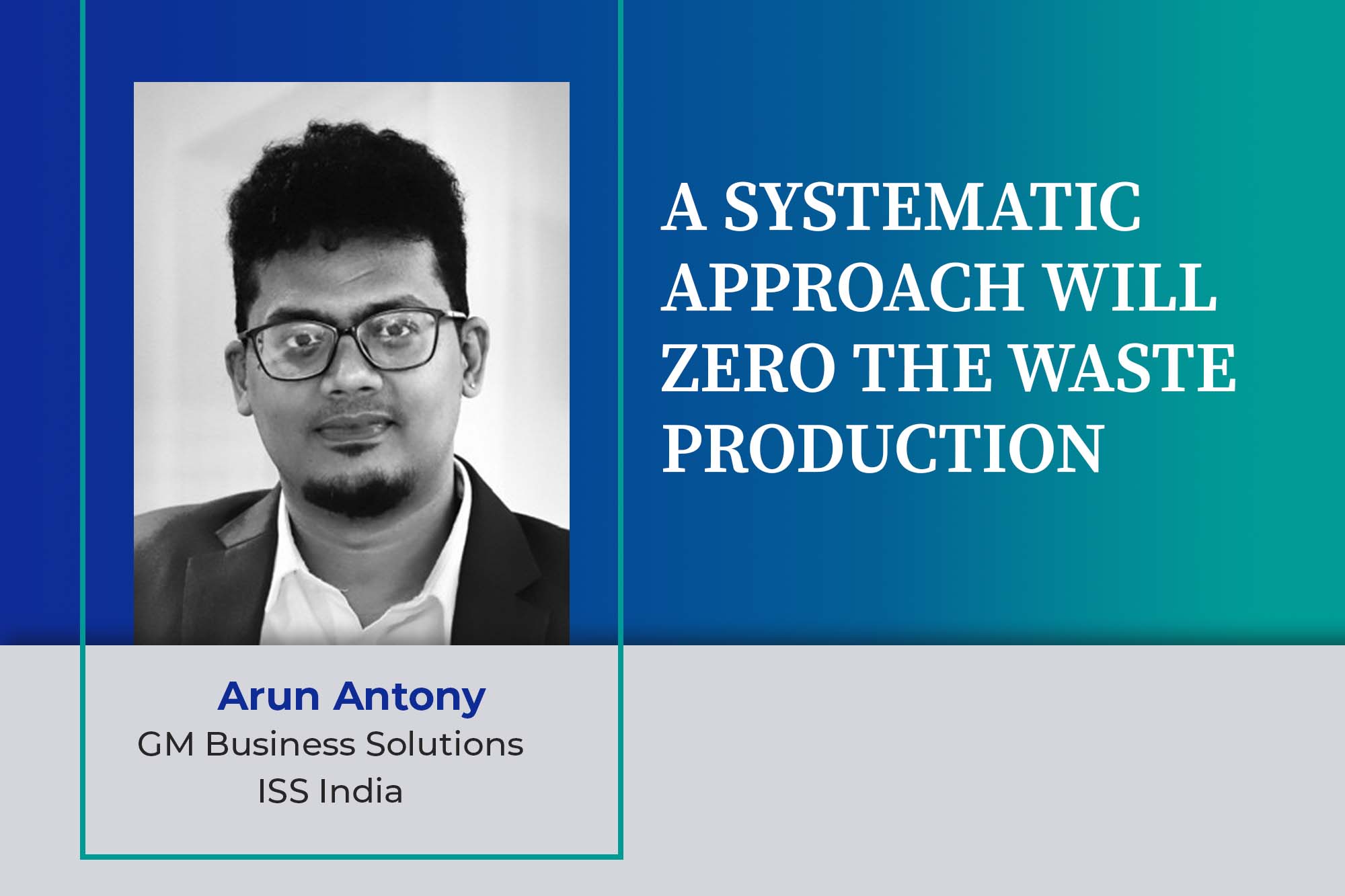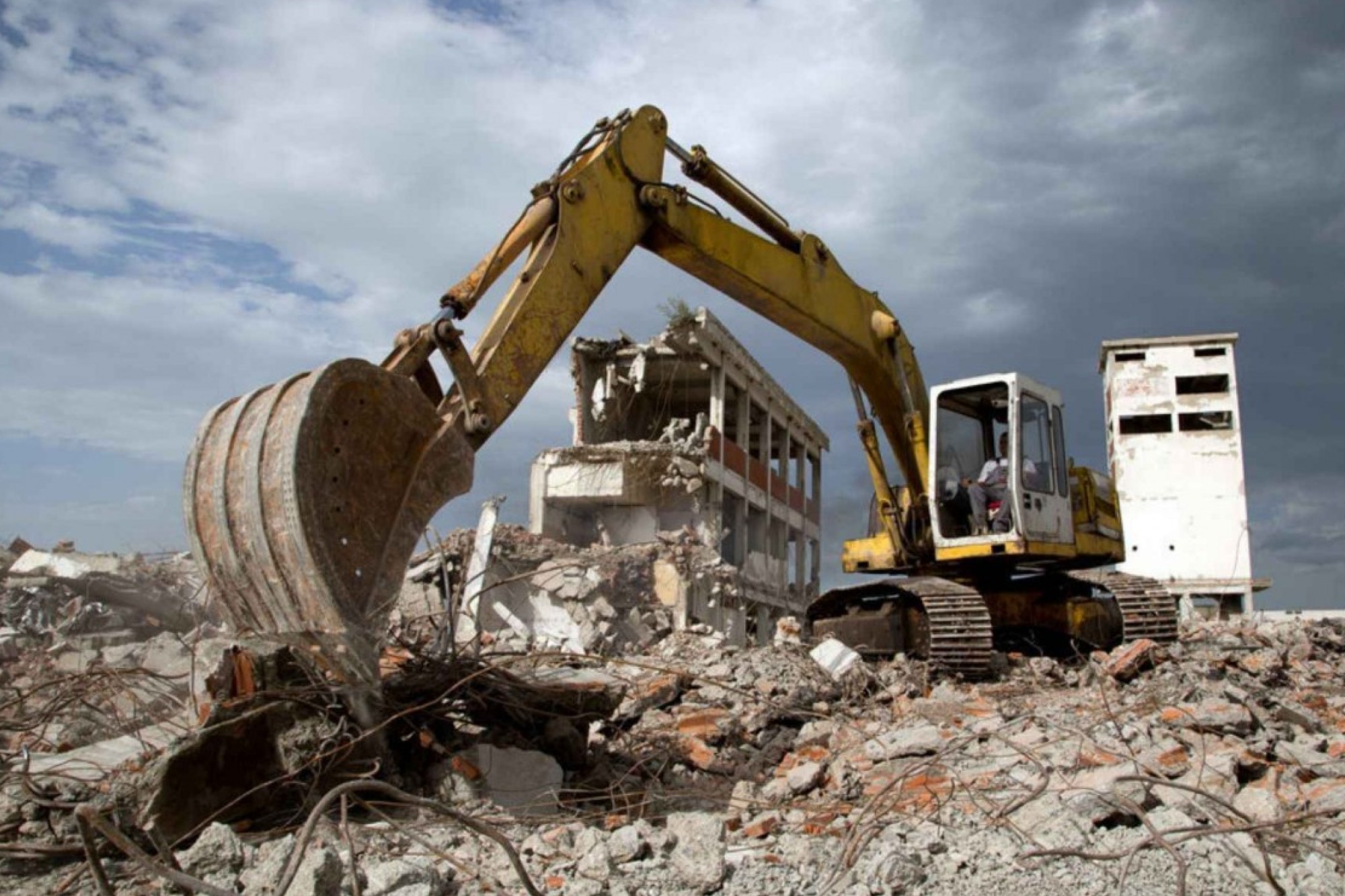Waste is not waste until we waste: Implement industrial waste to recycling and reuse
By OEM Update Editorial October 12, 2021 5:54 pm IST
World Clean Up Day is a reminder that we all have a part to play in attaining a zero-waste future. A latest tool by Purdue university scientist and WARM tool by EPA provide the amount of GHGs emissions prevented through alternative recycling or reuse methods.
Industrial waste produced by industrial activity includes any material that is rendered useless during a manufacturing process such as that of factories, mills, and mining operations. Types of industrial waste include dirt and gravel, masonry and concrete, scrap metal, oil, solvents, chemicals; scrap lumber, even vegetable matter from restaurants. Industrial waste may be solid, semi-solid or liquid in form. It may be hazardous waste: some types of which are toxic or non-hazardous waste. Industrial waste may pollute the nearby soil or adjacent water bodies, and can contaminate groundwater, lakes, streams, rivers or coastal waters. Industrial waste is often mixed into municipal waste, making accurate assessments difficult.
Waste management market
Growing environmental effects are making consumers inclined towards industrial waste recycling. Increasing awareness among consumers about the importance of reducing industrial waste is the primary driver for industrial waste recycling machines. It is anticipated to experience significant demand over the due to the growing applications of municipal waste recycling and waste management equipment in major industries worldwide, coupled with the increase in construction waste recycling.
The global waste management equipment market is estimated to grow at a CAGR of 4.4 percent during the 8 year period ending 2028. The global medical waste management market is expected to grow from $14.17 billion in 2020 to $14.56 billion in 2021 at a CAGR of 2.8 percent. The change in growth trend is mainly due to the companies stabilising their output after catering to the demand that grew exponentially during the COVID-19 pandemic in 2020. The market is expected to reach $18.18 billion in 2025 at a CAGR of 6 percent. The medical waste management market consists of the revenue generated from establishments providing services that include collection, transportation, storage, treatment, disposal, and recycling of waste. Biomedical waste is generated during the diagnosis, treatment, and immunisation of human beings or other living beings from healthcare facilities. Recycling is expected to become a key trend in medical waste management.
The solid form segment is projected to lead the global waste management equipment market in terms of value, followed by the semi-solid type waste management equipment segment. The municipal waste recycling segment is projected to lead the waste management equipment market by end use, accounting for maximum demand on a global level. Municipal waste includes all the waste generated from household and commercial sectors.
The BMC’s annual environment status report ESR report reveals that in 2020- 21, food waste accounted for 72.6 percent of the total garbage that makes its way into the city’s dumping grounds. Despite the BMC’s diktat to segregate wet waste at the source, a major chunk of this organic waste is choking the dumping grounds that have been witnessing recurring fires in the last few years. The impact food waste has on the environment has become a concern. Inger Andersen, Executive Director of United Nations Environment Programme, said in the UNEP’s Food Waste Index Report, 2021, “It burdens waste management systems, exacerbates food insecurity, making it a major contributor to the three planetary crises of climate change, nature and biodiversity loss, and pollution and waste.”
Waste management and recycling
Although industries prove to be helpful to our society they have various drawbacks and one of the most important ones is pollution caused by Industrial Wastes. Wastes generated by manufacturing or various industrial processes falling into the category of industrial wastes may be toxic and hazardous. Hence, we need proper management for their disposal. Waste is the result irrespective of industry you are in, from manufacturing or medical to agricultural or energy production, you produce waste. There are many elements that make up waste management including water treatment, providing roll off dumpsters and consulting.
Waste reduction model
WARM was created by the U.S. Environmental Protection Agency (EPA) to help solid waste planners and organisations estimate greenhouse gas (GHG) emission reductions from several different waste management practices. WARM calculates GHG emissions for baseline and alternative waste management practices, including source reduction, recycling, combustion, composting, anaerobic digestion, and land-filling. The model calculates emissions in metric tons of carbon dioxide equivalent (MTCO2E) and metric tons of carbon equivalent (MTCE) across a wide range of material types commonly found in municipal solid waste (MSW).
Thousands of small-scale and bigger industrial units simply dump their waste, more often toxic and hazardous, in open spaces and nearby water sources. Over the last three decades, many cases of serious and permanent damage to the environment by these industries have come to the fore. Be it workplace or home, using a refillable water bottle instead of plastic, bundling newspapers and cardboard for recycling, or even refurbishing old furniture or electronics is all we come across and it is such a task for personal level.
Ongoing manufacturing, production, construction and infrastructure activities have resulted in the generation of huge quantity of wastes, both solid and liquid, in industrial sectors such as sugar, pulp and paper, fruit and food processing, sago / starch, distilleries, dairies, tanneries, slaughterhouses, poultries, etc. Despite requirements for pollution control measures, these wastes are generally dumped on land or discharged into water bodies, without adequate treatment, and thus become a large source of environmental pollution and health hazard. Hence, when waste is not properly cared for, you can run into issues in the future that require time and money to resolve. By introducing waste management practices, you can run business more efficiently and allocate resources to growth initiatives rather than disaster response.
Geocycle Bubble Barrier stops 500 tonnes of plastic waste leakage
Geocycle is working towards building a plastic-free Agra with the support of its municipality; the Second project to be installed on the Varuna River in Varanasi. Recognising the need to address the challenge of marine plastic pollution, Geocycle India, the inhouse waste management arm of Ambuja Cements Limited and ACC Limited, has been making ongoing efforts to collect and co-process the plastic waste in the country. The pilot project Geocycle Bubble Barrier was commissioned on Mantola Canal in April 2021. Since the time of inception, it has been running successfully and has thwarted 500 tonnes of plastic waste leakage in the Yamuna River so far.
Nikhil Funde, Municipal Commissioner, Agra, said, “Installation of Geocycle Bubble Barrier is one of the most important initiatives being implemented to tackle plastic waste in Agra. It has helped Agra Municipal Corporation to stay committed to its goal of making Agra plastic-free.”
With the success of the first pilot – Geocycle Bubble Barrier, the second project is already in the planning phase which will be installed in Varanasi. The equipment will be installed on the Varuna River, right before the confluence point of Varuna and Ganges. The project is in the final phase for data collection, and scope finalisation with the local municipality.
The collected plastic waste will be co-processed within Ambuja and ACC plants. In its endeavours to support the plastic-free Agra mission, this successful pilot, being fully supported by the Agra municipality, has been a pioneering step from Ambuja and ACC. The waste collected from the riverbank, as well as waste from Agra’s MRF (Material Recovery Facility), has been safely transported by Geocycle for safe repurposing in the nearby plants of Ambuja and ACC.Neeraj Akhoury, CEO, India Holcim and Managing Director & CEO of Ambuja Cements Ltd., remarks, we are committed to building a sustainable future by adopting clean and green technologies. Our waste management arm Geocycle India has been our pillar in driving these initiatives and has helped us to co-process and reuse industrial wastes. Taking this mission ahead, we shall continue to recover energy safely and recycle material value inherent in waste, leaving zero residues. Local and state governments require various waste practices for community safety and environmental concerns. These requirements will vary between industries based on the waste different operations create. Responsible waste management can help your operation comply with these regulations and prevent penalties in the future. Ambuja is also exploring establishing another Bubble Barrier in the state of Gujarat and managed within Ambuja Nagar. This will help the local community around the plant by collecting plastics leaking into the rivers.
Reduce costs, save energy
There are costs associated with disposing of unused materials and commercial by-products. By finding ways to reuse waste, inside your company or through a third-party, you can help to reduce these expenses and improve bottom line. Additionally, you can also reduce costs by purchasing raw materials made from recycled materials. Aluminum, for example, is one of the fastest and easiest materials to recycle and is used in numerous manufacturing industries. But you’re paying almost twice as much when you purchase fresh aluminum over recycled aluminum. The benefit of industrial recycling is the fact that you are putting less strain on the Earth’s resources by finding ways to reuse or recycle industrial waste. When industrial waste materials and by-products are reused, it decreases the need to produce new raw materials. Less waste also lessens our need for landfills, allowing that land to be used for other purposes, and reduces the greenhouse emissions and other gas pollutants that originate as waste in landfills breaks down.
Environmental waste transportation
Transportation can have a huge impact on the health of people and the environment. Along with the health benefits, waste transportation services help ensure companies follow government regulations for waste disposal. The process of recycling industrial waste includes transportation, processing, and reselling; all of which necessitate manpower of all skill levels. Transportation services may involve Bulk liquid, sludges and solid transport, containerised waste, construction and demolitions, packaged waste and used oil reclamation etc. Recycling and reuse creates at least nine times more jobs than landfills and incinerators.
Meeting Green Building Certification requirements based on their environmental practices can make your company more competitive in its industry and improves building’s operational efficiency. When a company’s operation produces waste in large quantities, industrial waste management planning can feel like a challenging process.
Industrial waste management planning
The 4 key points to industrial waste management planning can help establish a reliable process for the long term. Addressing following areas can bring additional benefits-
- Critical Points: Before you can create a management plan, identify what processes you struggle with. Perhaps you find it challenging to keep up with a tank cleaning schedule, or you have more liquid waste than you know what to do with. You may also find it difficult to meet government regulations for proper waste disposal on top of other regulatory processes. Once you identify your critical points, guide your planning to address these challenges first.
- Thresholds: How much waste can your operation handle before it’s too much? Depending on the business you run and your facility size, you may have different limits for waste accumulation. Assessing your waste thresholds can clarify which waste types need more attention than others, and how much waste you can accumulate before it becomes unsafe.
- Frequency: With the thresholds identified, a schedule can be created for waste management processes. Think about how often you create certain types of waste and how often you’ll need to respond. Waste types that pose more risk or accumulate faster will require more frequent handling. Other types that develop slowly can survive with less management.
- Collaboration: After determining critical points, thresholds and frequencies, you can turn to a waste management professional to help you follow through with your plan. Management and recycling professionals can provide resources your operation may not have, so you can remain safe, compliant and efficient every step of the way.
New tool to reduce, reuse and recycle across industrial sectors
A new tool finds hidden connections across industrial sectors and identifies opportunities to reduce waste and lower carbon emissions by mapping the physical economy for a region. Shweta Singh, the interdisciplinary scientist at Purdue University who developed the tool said, “The climate and the economy are too important for us to make mistakes. This tool provides a big-picture view and allows policymakers and industry to plug in a potential change and see the results. Those involved can virtually test different options before making a decision.” The Past zero-waste and low-carbon efforts focused on one portion of industrial flow, for example, reducing energy use in a single production process. However, a view of the whole system is needed to make the best choices and most effective investments in emerging technology for overall improvement, she said. The theory behind the model is detailed in a paper in the journal Energy & Environmental Science of The Royal Society of Chemistry. A paper focused on the cloud platform tool will be published in the Journal of Industrial Ecology. The tool uses physical principles and mechanistic models from physics, engineering and biological sciences to automate mapping of the physical economy, and it is much faster than the standard methods, Singh said. “With this modeling tool, we can do in one day what would have taken 100 days,” she said.
The tool was used to map the physical economy of Illinois for 10 agro-based sectors from farming to downstream processing of products. The model found connections and highlighted opportunities for large-scale recycling to reduce waste. The results showed that the adoption of technologies for industrial wastewater and hog manure recycling would have the highest impact by reducing more than 62 percent of hog waste outputs, 96 percent of dry corn milling waste, and 99 percent of soybean hull waste. Singh disclosed the modeling tool to the Purdue Research Foundation Office of Technology Commercialisation, which has applied for patent protection on the intellectual property.
Sustainability: To be sustainable, there will be social benefits of industrial recycling too. It shows a commitment to the future of the community, which can easily become a competitive advantage over the rest of the market. Make your business sustainable by utilising Waste-to-Energy recycling.
Daniel Adedokun, the Head of Geocycle, Lafarge Africa Plc, states, “At Lafarge, our commitment to sustainability is unwavering. We drive a circular economy across everything we do, to keep materials in use for as long as possible, giving them a second life – and a third and a fourth – and using only what is needed to preserve nature. Improving waste collection is fundamental to advancing the circular economy – and to reducing marine litter.”
The ongoing medical supplies shortage due to the pandemic has resulted in the need for more sustainable and recycling of medical products. Various sources indicate a range of services, Occupational Safety and Health Administration (OSHA) compliance measures and access to disposal resources such as waste water treatment, oil recycling, solidification, land refills etc., and ensure many benefits of waste management. Hopefully, the next generation will prosper in a Zero Waste economy learning from today’s experiences. The World Clean Up Day held on September 15, is a reminder that we all have a part to play in attaining a zero-waste future.
Cookie Consent
We use cookies to personalize your experience. By continuing to visit this website you agree to our Terms & Conditions, Privacy Policy and Cookie Policy.









